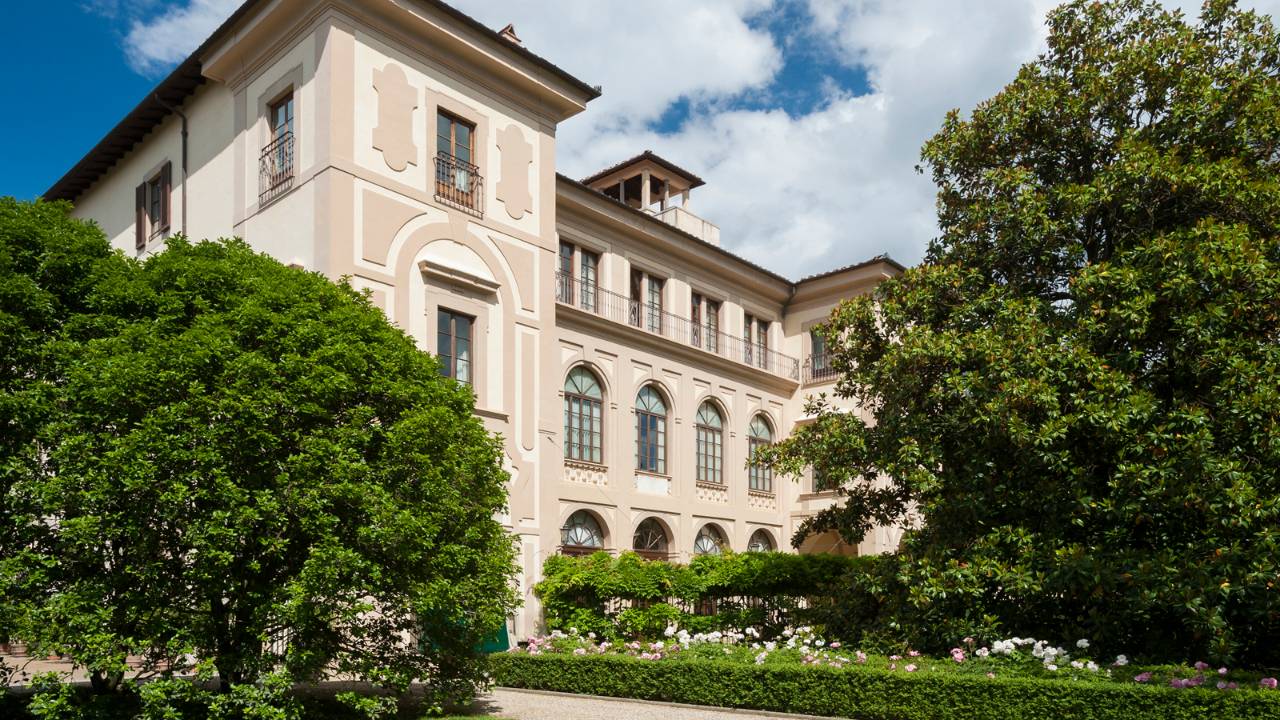Clarice Starling: Did you do those drawings, Doctor?
Hannibal Lecter: Ah. That is the Duomo seen from the Belvedere. You know Florence?
Clarice Starling: All that detail just from memory?
Hannibal Lecter: Memory, Agent Starling, is what I have instead of a view.
My memory of Florence is as vivid now as it was when I was there, whether it be standing on the Ponte Vecchio or standing in the Piazza del Duomo, this city leaves a permanent mark in your imagination and on your soul. Florence, known as the “cradle of the Renaissance” (la culla del Rinascimento) for its monuments, churches and buildings, was in 1982 declared by UNESCO a World Heritage Site. The city is noted for its culture, Renaissance art and architecture; it contains numerous museums and art galleries, such as the Uffizi Gallery and the Palazzo Pitti, and still exerts an influence in the fields of art, fashion, politics and popular culture.
There is a sombre elegance to Florence, a city that has seen its fair share of spilt blood. A turbulent political history includes periods of rule by the powerful Medici family, and numerous religious and republican revolutions. Today the city is a memorial to its colourful past. The Four Seasons Firenze too can count itself among the historical wonders that hide round every corner in this astonishing city, made up of the Palazzo Scala Della Gherardesca and the “Conventino” this hotel is a living museum set within the walled tranquility of Florence’s largest private garden.The hotel is located on the edge of Florence’s historic centre and occupies two protected buildings: a 15th Century and a 16th Century Palazzo, between them lie 11 acres of botanical gardens that house the hotels spa, outdoor swimming pool, private gardens and the Conventino, a separate building housing 37 rooms and suites served by it’s own reception, concierge and business centre. Behind the classical but unassuming façade of the main hotel, guests get the rare opportunity to view 15th–19th century artworks in their original context. Frescoes, bas-reliefs, stuccoes and silk wallpapers have all been carefully restored to reveal vivid detail dating back over five centuries. Lecter would have been overwhelmed and so were Rachel and I upon entering from Borgo Pinti; what lay beyond the door exceeded any expectation.
The imposing 15th century courtyard lobby it breathtaking, the property’s most valuable artwork comprising of twelve symmetrical sections flanked by porticoes and barrel-vaults, decorated with an ornamental coffered celling comprising thousands if painted sunken panels is something to behold. Walking through this space you were reminded of how the Renaissance had such an influence on not only public works but also private homes of the rich and famous of the time. At reception we checked in and, aided by the helpful-as-ever Four Seasons staff, were escorted to our junior suite situated in the main building in the east wing. The accommodation at this hotel maintains the integrity of the original layout. As such, no two of the 116 rooms and suites are alike; each has individual dimensions and window sizes and many have idiosyncratic original features including frescos, celling art, staircases, fireplaces and stoves.Guestrooms have been designed by Pierre Yves Rochon in two colour scheme, yellow and green, ours was a lovely shade of camomile yellow, enriched with golden tones in the soft furnishings. Our view from the double aspect windows was the park, gardens and spa building including outdoor pool; the lush green glimmered in the sunlight sheltered from the city outside, a private sanctuary behind the walls. The room was grand with two double beds, lounge area, study area, double walk in wardrobes and a impressive marble bathroom with his and hers sinks, roll-top bath, WC and glass-enclosed rain shower, but I kept coming back to that view. I was not alone, for esteemed previous visitors to this property included a Pope, an order of nuns, five centuries of Florentine nobility and a Viceroy of Egypt, all who looked out on the same vista with awe.Rachel and I prepared for dinner, making full use of the custom made toiletries by Lorenzo Villoresi, the first Italian perfumer to win the Coty Prize. Our reservation that evening was at Il Palagio, Four Seasons Florence in-house Michelin Star restaurant. This delightful dinner ranks in my top five dinners of all time, the food, service and genuine fun had that evening will forever hold a place in my heart. After dinner, we sojourned to the Atrium Bar where, beneath a skylight in the Palazzo della Gherardesca, the Bar offers an elegant setting for guests to enjoy light meals, coffee specialties, and most importantly cocktails throughout the day and night. After a few espresso martinis, it was time to call it a night and retire to our suite. The night had fallen and like a scene out of Fantasia, the black glass-like sky had drawn a blanket over the garden and Florence, no twinkly lights, just black, like that view from earlier had ceased to exist. However, upon sunrise, with the sunlight beaming through the curtains, highlighting the gold furnishings, the view was back, the epitome of tranquility.After breakfast in Il Palagio, with Rachel obviously choosing Eggs Florentine, we made our way out of this Florentine sanctuary and on to the busy streets. Weaving through the narrow alleys and roads we absorbed the history and beauty of this city, from the Uffizi Gallery to the Palazzo Vecchio, the Basilica of Santa Croce to the Loggia dei Lanzi the marvels just kept coming. The pièce de résistance was seeing the masterpiece of Renaissance sculpture that is Michelangelo’s David. Created between 1501 and 1504, by the Italian artist Michelangelo this marble statue stands 17ft high, depicting a standing male nude. The statue represents the Biblical hero David, a favoured subject in the art of Florence. Originally commissioned as one of a series of statues of prophets to be positioned along the roofline of the east end of Florence Cathedral, the statue was placed instead in a public square, outside the Palazzo della Signoria, the seat of civic government in Florence, where it was unveiled on 8 September 1504. The statue was moved to the Galleria dell’Accademia, Florence, in 1873, and later replaced at the original location by a replica. Rachel and I stood there speechless at the sheer size of the statue and the elegance of this man captured in marble by Michelangelo.
Upon returning to Four Seasons Firenze to collect our luggage, before making our way to the station and Rome, our last stop on our Italian tour, the sun began to set. The pink, purple, orange hues almost freezing the silhouette of the Florence skyline as the sun slowly bid another night farewell. With Florence acting as such an inspiration to writers, painters, sculptors (and murders) for centuries, standing there, pondering on what I had seen, I could see why. Everywhere you look there is something to stimulate the body, mind and soul. Four Seasons Firenze is the perfect place to start your Florentine journey, with its own rich history, superb accommodation and tempting selections from its restaurants and bars I could not think of anywhere better as the canvas on which to start creating that everlasting view of Florence, the birthplace of the Renaissance.
Four Seasons Hotel Firenze
Borgo Pinti 99
50121 Firenze
Italy

